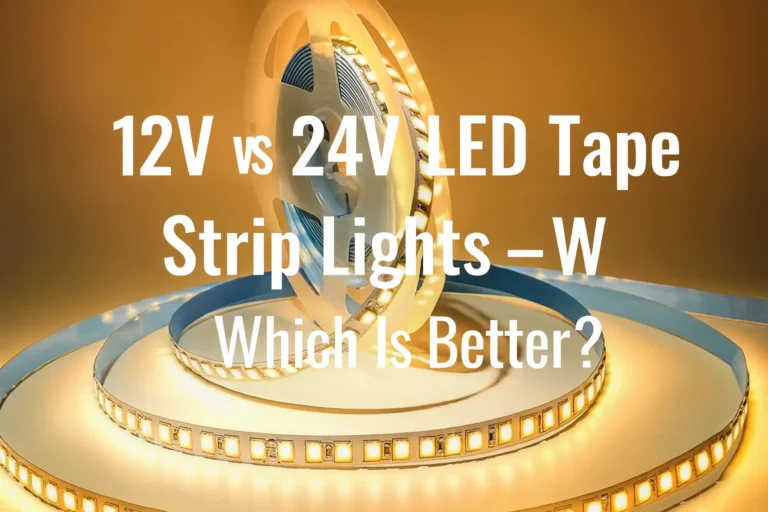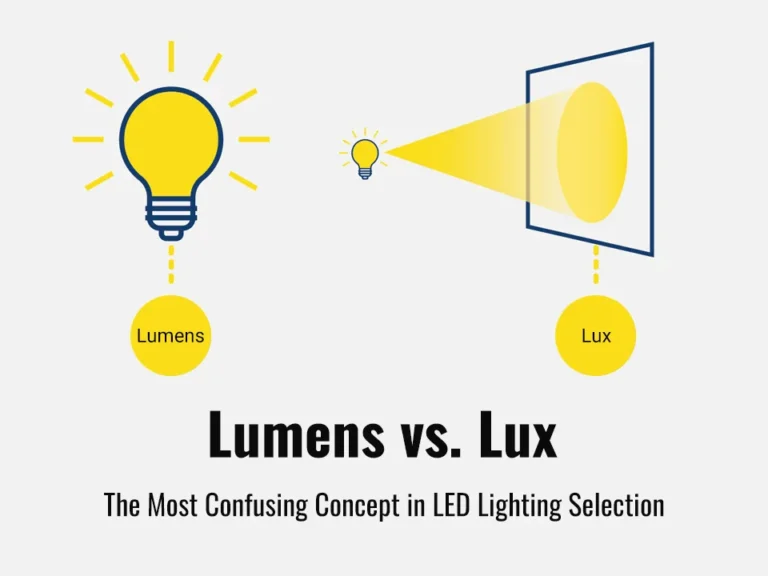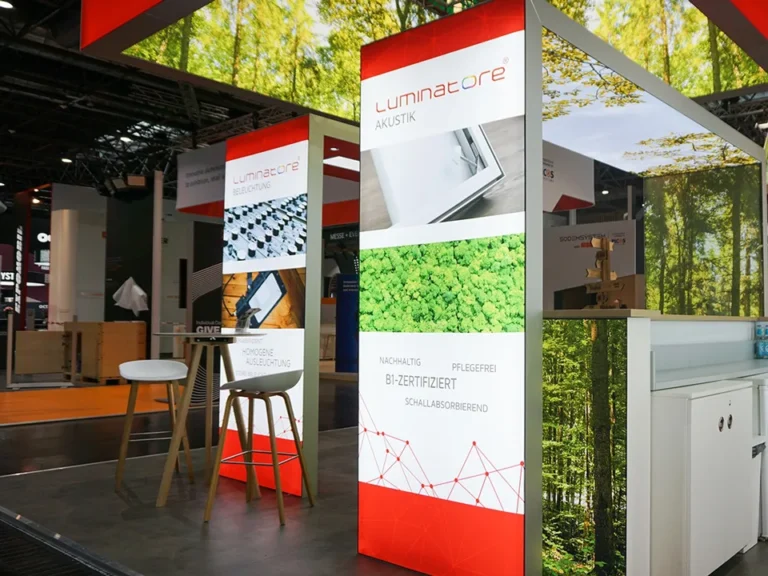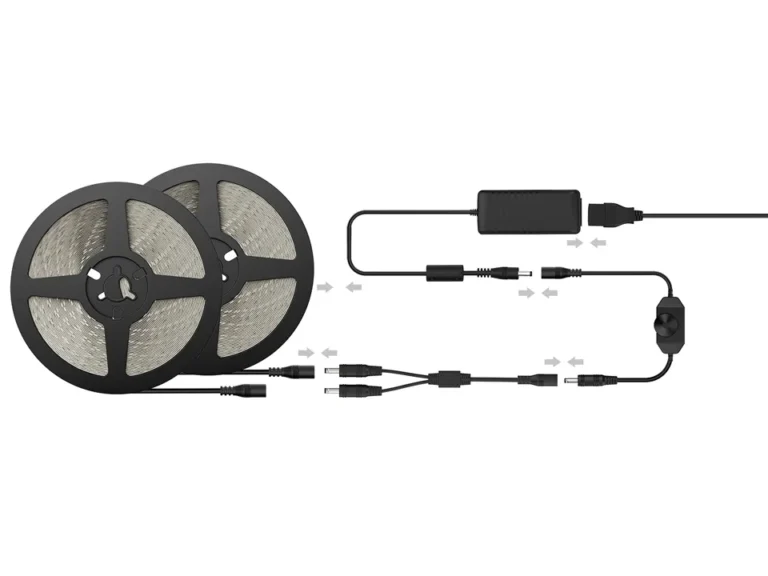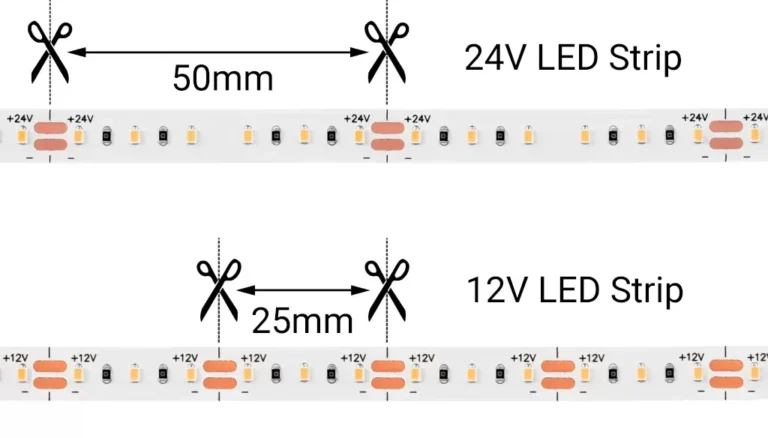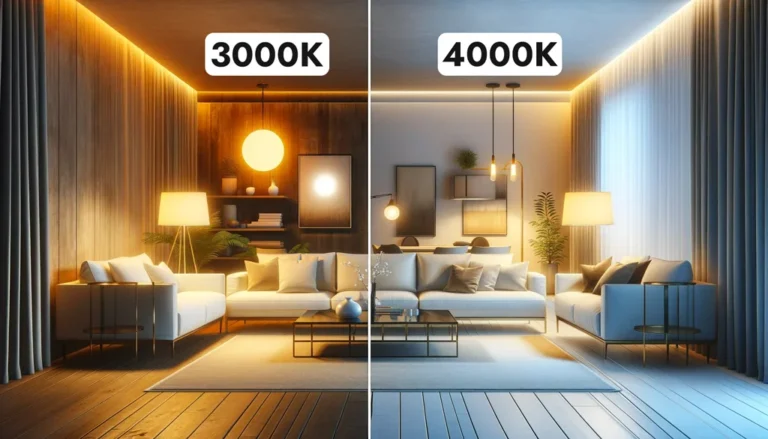wpuszczenie
W Oświetlenie taśmy LED Instalacje, wybór napięcia jest często niedoceniany, ale bezpośrednio wpływa na spójność jasności, efektywność energetyczną i długoterminowe koszty utrzymania. Wielu instalatorów doświadczyło frustrujących sytuacji – paski LED ściemniające się w połowie przebiegu lub częste posunięcia potrzebne po instalacji. W większości przypadków problemy te są spowodowane wyborem niewłaściwego układu napięcia: 12 V, 24 V lub 48 V. Aby uzyskać głębsze porównanie między dwoma najczęstszymi napięciami, zobacz nasz pełny przewodnik: 12V vs 24V taśmy LED – jak wybrać.
Wybór odpowiedniego napięcia taśmy LED ma kluczowe znaczenie dla zapobiegania spadkowi napięcia — utrata napięcia, która występuje, gdy prąd elektryczny przepływa przez pasek, powodując nierówną jasność i marnowanie energii. Systemy o wyższym napięciu zmniejszają prąd dla tej samej mocy wyjściowej, co minimalizuje spadek napięcia i gromadzenie się ciepła, szczególnie w przypadku długich przebiegów.
Na przykład taśmy LED 12V oferują dużą elastyczność i są idealne do krótkookresowych projektów DIY; taśmy LED 24 V zapewniają doskonałą równowagę między wydajnością a kosztami średnich długości; podczas gdy taśmy LED 48V wyróżniają się w instalacjach długodystansowych i projektach inżynierskich na dużą skalę. Ten przewodnik podziała podstawowe napięcie, różnice w wydajności i scenariusze najlepszego zastosowania — pomoże Ci z pewnością wybrać odpowiednie napięcie taśmy LED dla każdego projektu oświetlenia.

Zrozumienie napięcia taśmy LED
Przy wyborze napięcia taśmy LED ważne jest, aby zrozumieć związek między napięciem a maksymalną długością pracy dla świateł LED.
W przypadku pasków LED o stałym napięciu wyższe napięcie oznacza, że do dostarczenia tej samej mocy potrzebny jest mniej prądu, co pomaga zmniejszyć spadek napięcia i utrzymać stałą jasność na całej długości paska.
Typowe specyfikacje:
Taśmy LED 12V: Utrzymuj stabilną jasność do około 5 metrów (16 stóp); poza tą długością może wystąpić zauważalne przyciemnienie.
Paski LED 24V: Powszechnie wspierają przebiegi około 10 metrów (33 stopy), z niektórymi opcjami wysokiej jakości sięgającymi 15 metrów.
Paski LED 48V: Może przebiegać 15-20 metrów (50-65 stóp) lub więcej; w połączeniu z systemem pasków LED o stałym prądzie można osiągnąć długość 30-40 metrów (100-130 stóp) lub więcej.
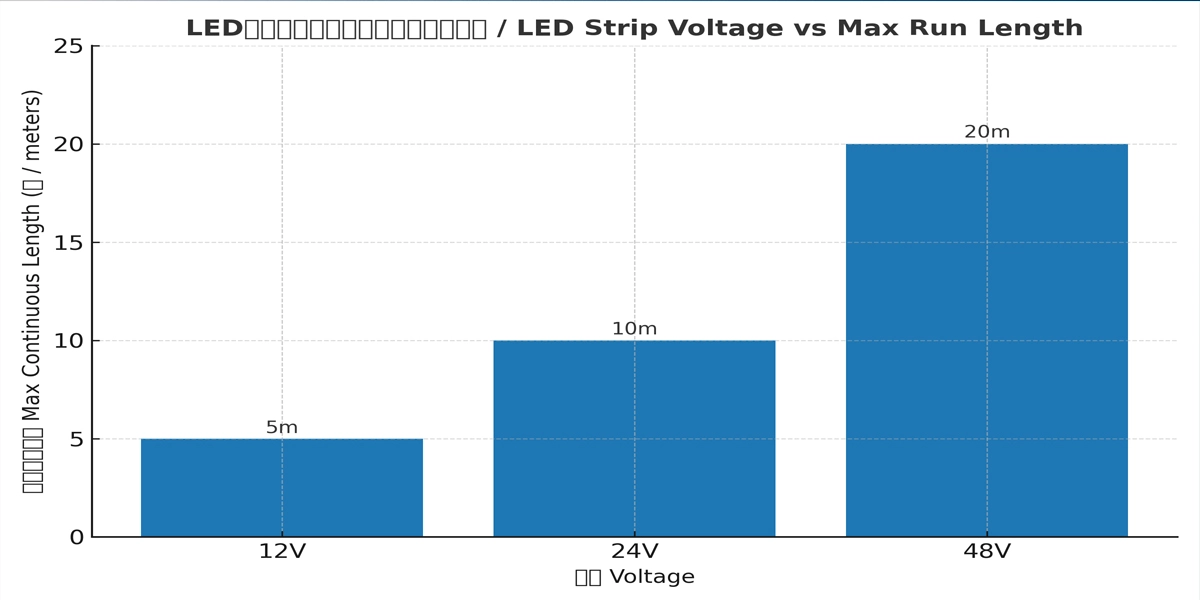
Inną kluczową koncepcją jest stałe napięcie vs prąd stały:
Paski LED o stałym napięciu (takie jak 12V, 24V, 48V) wykorzystują zasilacz o stałym napięciu i są proste w instalacji i kontrolowaniu, ale są bardziej podatne na spadek napięcia na długich dystansach.
Paski LED o stałym prądzie zapewniają stabilne wyjście prądowe, zapewniając jednolitą jasność i temperaturę barwową w dłuższych długościach - idealne dla projektów na dużą skalę wymagających maksymalnej wydajności i spójności.
Rozumiejąc te podstawy, możesz wybrać odpowiednie napięcie taśmy LED, które równoważy długość instalacji, spójność jasności, złożoność okablowania i całkowity koszt, zapewniając zarówno wydajność, jak i jakość wizualną.
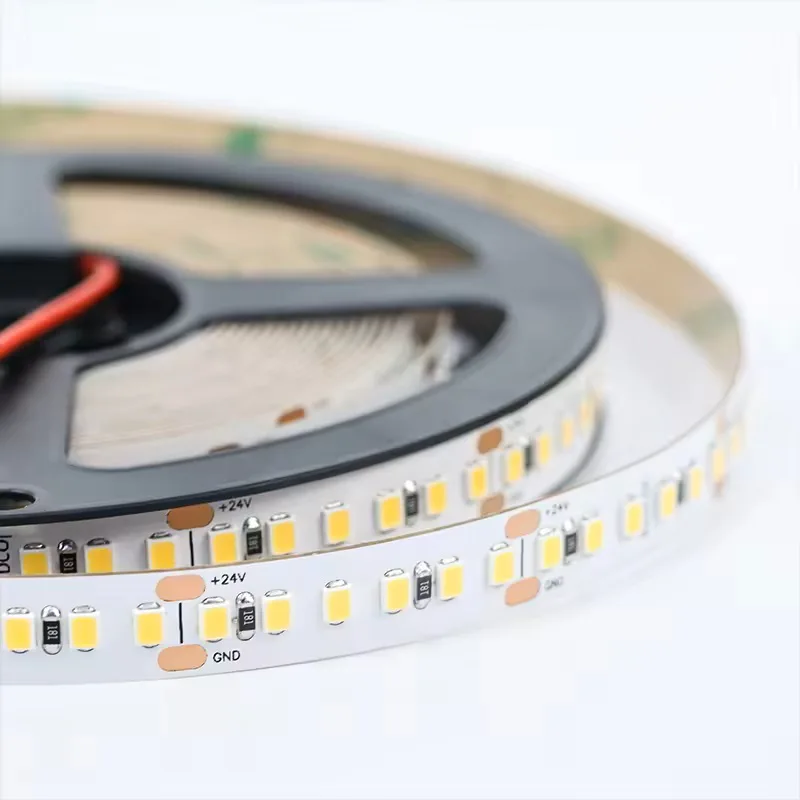
Taśma LED SMD2835
Model główny: FQX08T120C
LED Ilość na metr Opcja: 60/72/120/128/140
Opcja szerokości PCB: 6mm/8mm/10mm
Opcje kolorystyczne: 2700K/3000K/4000K/5000K/6500K
Opcja CRI: 80/90
Napięcie wejściowe: DC12V/DC24V
Moc na metr: 6W/8W/9.6W/12W/14.4W/19.2W
Efektywność: 100-200 lumenów/wat
Opcja stopnia IP: Stopień ochrony IP20/IP54/IP65/IP67/IP68
Gwarancja: 5 lat
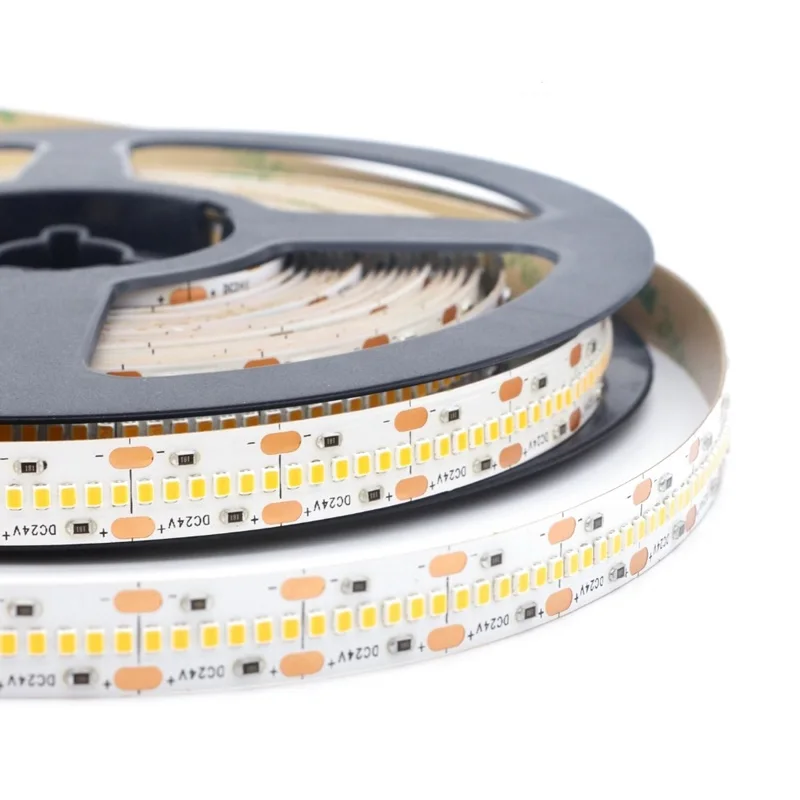
Taśma LED SMD2216
Model główny: FWX10T240C
LED Ilość na metr Opcja: 120/180/240/300/420
Opcja szerokości PCB: 5mm/10mm
Opcje kolorystyczne: 2700K/3000K/4000K/5000K/6500K
Opcja CRI: 80/90
Napięcie wejściowe: DC12V/DC24V
Moc na metr: 9.6W/10W/14.4W/19.2W/20W/24W
Opcja stopnia IP: Stopień ochrony IP20/IP54/IP65/IP67/IP68
Gwarancja: 5 lat

Stałoprądowa taśma LED o długim czasie działania
Model główny: FQX10T120D
Opcja metra na rolkę: 10m/20m/30m/50m
Opcja szerokości PCB: 10mm/12mm
Opcje kolorystyczne: 2700K/3000K/4000K/5000K/6500K
Opcja CRI: 80/90
Napięcie wejściowe: DC24V/DC36V/DC48V
Moc na metr: 4.2W/7.2W/8.5W/12W
Opcja stopnia IP: Stopień ochrony IP20/IP54/IP65/IP67/IP68
Gwarancja: 5 lat
Kiedy wybrać diody LED 12V, 24V lub 48V
12V paski LED
Światła taśmowe 12V działają przy niższym napięciu, co oznacza wyższy prąd dla tej samej mocy. Taka konstrukcja pozwala na krótsze odstępy między cięciami - zazwyczaj 25-50 mm - idealnie nadają się do szczegółowych instalacji, takich jak półki wystawowe, akcenty meblowe i wnętrza samochodowe.
Jednakże, ponieważ systemy niskiego napięcia są bardziej podatne na spadek napięcia, działa dłużej niż 5 m bez wtrysku zasilania może prowadzić do zauważalnej utraty jasności. Wynika to z oporu w przewodach i okablowaniu listwy, co jest bardziej wyraźne ograniczenie w systemach 12V niż w systemach 24V lub 48V.

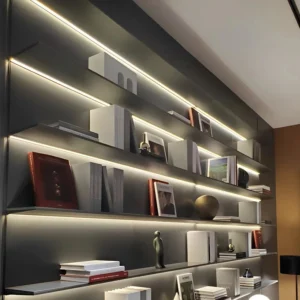
Najlepsze dla:
Krótkie przebiegi do 5 m bez widocznej utraty jasności
Oświetlenie dekoracyjne i akcentujące w meblach, półkach i małych przestrzeniach
Systemy niskonapięciowe, morskie, kamperowe i zasilane energią słoneczną
Plusy:
- Niski koszt początkowy i powszechnie dostępne sterowniki i ściemniacze
- Elastyczna instalacja dzięki krótkim odstępom cięcia
- Silna kompatybilność z systemami opartymi na bateriach 12V
Wady:
- Zauważalny spadek napięcia w dłuższych przebiegach bez wtrysku zasilania
- Niższa wydajność w porównaniu do systemów o wyższym napięciu na duże odległości
24V LED paski LED
Światła taśmowe 24V podwajają napięcie systemów 12V, zmniejszając prąd o połowę dla tej samej mocy wyjściowej. Zmniejsza to nagromadzenie ciepła i spadek napięcia, umożliwiając podjazdy do 10 m bez utraty jasności.
Wyższe napięcie oznacza lepszą wydajność i bardziej stabilne oświetlenie w zastosowaniach takich jak oświetlenie hotelowe, półki handlowe i oświetlenie akcentowe biurowe. Podczas gdy interwały cięcia są zazwyczaj dłuższe (50–100 mm), ograniczając ultraprecyzyjne przycinanie, ogólna równowaga między wydajnością, kosztem i stabilnością jasności sprawia, że 24 V jest preferowanym wyborem dla wielu projektów komercyjnych.
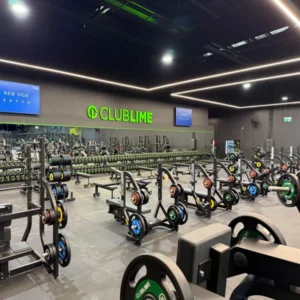
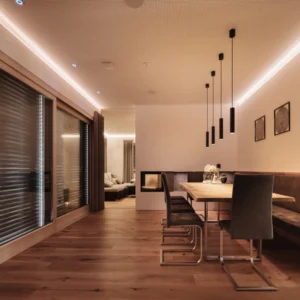
Najlepsze dla:
Instalacje średniej długości około 10 m
Oświetlenie komercyjne w hotelach, biurach i ekspozycjach półek handlowych
Przestrzenie wymagające stałej jasności i płynnej wydajności ściemniania
Plusy:
- Niższy prąd zmniejsza ciepło i poprawia wydajność w średnich przebiegach
- Zrównoważony stosunek kosztów do wydajności dla większości zastosowań komercyjnych
- Szeroka kompatybilność z profesjonalnymi sterownikami i kontrolerami DMX/DALI
Wady:
- Większe odstępy cięcia zmniejszają elastyczność w ciasnych instalacjach
- Nieco wyższy koszt początkowy niż systemy 12V
48V paski LED
Światła taśmowe 48V oferują najniższy przepływ prądu dla tej samej mocy, co znacznie minimalizuje spadek napięcia nawet na odległości 15-20 m lub więcej. Pozwala to na jednolitą jasność w dużych instalacjach, takich jak fasady budynków, długie wnęki lub elementy architektoniczne na zewnątrz bez częstych punktów wtrysku zasilania.
Zmniejszona złożoność okablowania i mniej zasilaczy obniżają koszty instalacji i konserwacji. Jednakże, odstępy cięcia są najdłuższe (100–200 mm), co ogranicza zastosowanie w projektach wymagających precyzyjnego dopasowania. Ponadto kompatybilne sterowniki i systemy ściemniania są mniej powszechne w porównaniu z opcjami 12 V i 24 V.
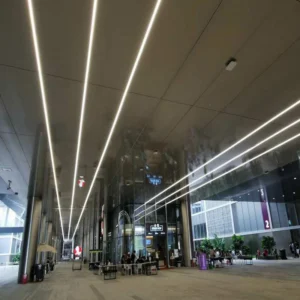
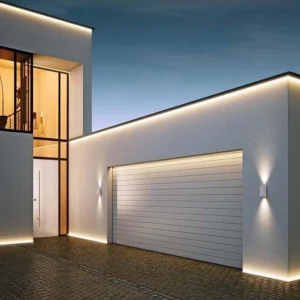
Najlepsze dla:
Instalacje na odległość 15–20 m lub więcej
Oświetlenie architektoniczne, zatoki sufitowe i duże projekty zewnętrzne
Projekty komercyjne lub inżynieryjne mające na celu zminimalizowanie okablowania i zasilania zasilania
Plusy:
- Najniższy prąd spośród trzech napięć, zapewniający najbardziej stabilną jasność
- Wysoka energooszczędność na długich dystansach
- Wymagana mniejsza ilość zasilaczy, zmniejszając złożoność okablowania i konserwację
Wady:
- Ograniczona dostępność kompatybilnych sterowników i kontrolerów w porównaniu do 12 V/24 V
- Długie interwały cięcia zmniejszają możliwości dostosowywania w ciasnych przestrzeniach
Przewodnik doboru napięcia taśmy LED
| Napięcie | Najlepsze dla | Maksymalna długość przebiegu | Typowy interwał cięcia | Wspólny zakres mocy (W/m) | Plusy | Wady |
| 12V | Krótkie przejazdy ≤ 5 m; oświetlenie dekoracyjne; motoryzacyjny, morski, kamper, systemy solarne | ~5 ja | 25–50 mm | 4,8–14,4 W/m | Niski koszt; krótkie interwały cięcia; wysoka kompatybilność z systemami akumulatorów 12 V | Wyższy spadek napięcia w długich przebiegach; niższa wydajność dla dłuższych odległości |
| 24V | Średnie biegi ~10 m; hotele, biura, półki handlowe; stałe ściemnianie | ~10 m | 50–100 mm | 7,2–19,2 W/m | Niższy prąd zmniejsza ciepło; dobry bilans kosztów do wydajności; kompatybilny z profesjonalnymi przetwornikami | Dłuższe odstępy cięcia niż 12V; nieco wyższy koszt |
| 48V | Długie przebiegi 15-20 m+; fasady architektoniczne, duże projekty plenerowe | 15–20+ m | 100–200 mm | 10–20 W/m | Najniższy prąd, minimalny spadek napięcia; najwyższa wydajność w długich przebiegach; wymagana mniejsza ilość zasilaczy | Ograniczone opcje sterownika/kontrolera; najdłuższe interwały cięcia |
* Maksymalna długość przebiegu jest oparta na standardowej instalacji bez dodatkowego wtrysku zasilania.
Błędy, których należy unikać przy wyborze napięcia taśmy LED
Wybór niewłaściwego napięcia taśmy LED może prowadzić do utraty jasności, przegrzania lub kosztownej przeróbki. Oto najczęstsze błędy, których należy unikać:
Używanie pasków 12V do długich przebiegów bez wtrysku zasilania
Paski LED 12V są idealne do krótkich biegów (≤5 m). Używanie ich na dłuższych dystansach bez dodawania dodatkowych posuwów spowoduje spadek jasności.
Cięcie paska w niewłaściwej pozycji
Niezależnie od tego, czy jest to 12V, 24V, czy 48V, zawsze tnij na wyznaczonych miedzianych klockach. Cięcie w innym miejscu może uszkodzić obwód i sprawić, że pasek będzie bezużyteczny.
Dopasowanie niewłaściwego napięcia zasilania
Nigdy nie podłączaj paska 12V do zasilania 24 V lub 48 V (lub odwrotnie). Może to natychmiast wypalić diody LED.
Dowiedz się więcej o tym, dlaczego niezgodne napięcia mogą uszkodzić Twoje diody LED w naszym szczegółowym przewodniku: Podłączanie pasków LED 12V do zasilania 24 V.
Ignorowanie obliczeń spadku napięcia
W przypadku przebiegów powyżej 5 m (12V), 10 m (24V) lub 20 m (48V), oblicz spadek napięcia z wyprzedzeniem i zaplanuj wtrysk mocy lub systemy wyższego napięcia.
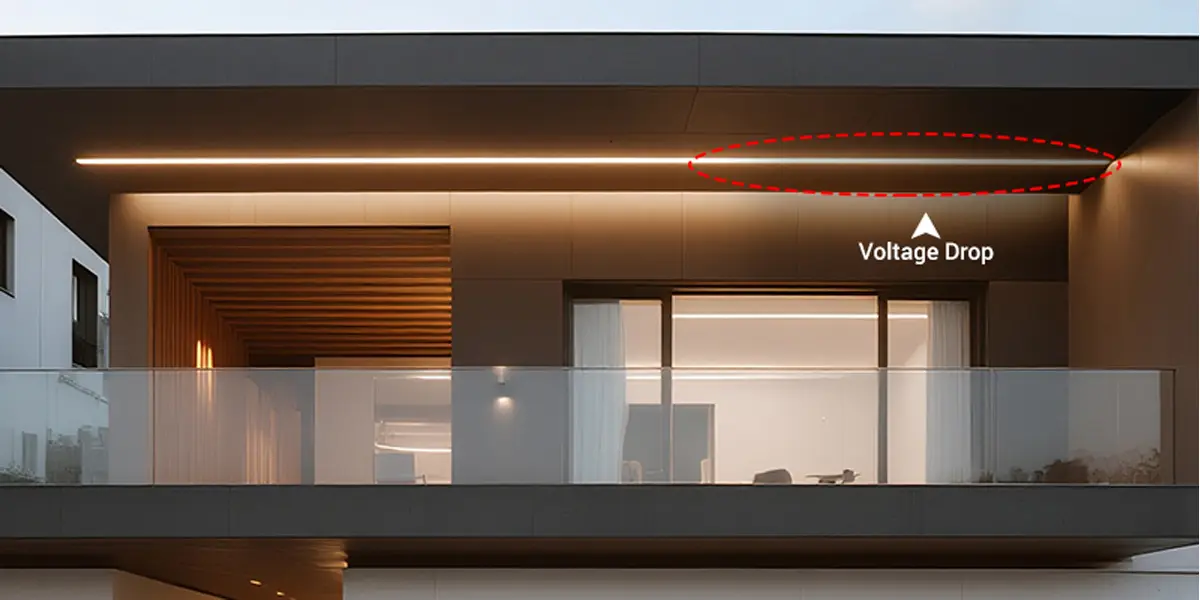
Przeciążenie zasilania
Zawsze wybieraj sterownik o co najmniej 20–30% większej pojemności niż całkowita moc pasków LED.
FAQ – Wybór napięcia taśmy LED
bynajm . Dostarczenie wyższego napięcia niż pasek jest przystosowane do przesterowania diod LED, powodując przegrzanie, uszkodzenie lub natychmiastową awarię. Zawsze dopasowywać napięcie paska do napięcia zasilania.
W przypadku większości instalacji zewnętrznych preferowane są taśmy LED 24 V lub 48 V, ponieważ umożliwiają one dłuższe przebiegi przy mniejszym spadku napięcia, co jest ważne dla oświetlenia architektonicznego na dużą skalę lub oświetlenia fasadowego.
12V: do 5 m bez wtrysku zasilania
24V: do 10 m bez wtrysku zasilania
48V: do 15-20 m bez wtrysku zasilania
Dłuższe przebiegi wymagają dodatkowych zasilaczy lub równoległych okablowania.
Paski LED 12V są najlepsze w zastosowaniach samochodowych, morskich i kamperowych, ponieważ są bezpośrednio kompatybilne z systemami akumulatorów 12V. Jeśli planujesz podłączyć wiele pasków LED 12 V do jednego zasilacza, przeczytaj nasz przewodnik krok po kroku: Czy możesz podłączyć wiele pasków LED 12V do jednego zasilacza?
Niekoniecznie. Jasność zależy od typu LED, gęstości (diody LED na metr) i mocy. Napięcie wpływa głównie na długość i wydajność pracy.
Wniosek
Wybór odpowiedniego napięcia taśmy LED wpływa nie tylko na wyniki instalacji, ale także na spójność jasności, efektywność energetyczną i koszty konserwacji.
Krótkie przebiegi i precyzyjne oświetlenie: wybierz 12 V, aby zapewnić elastyczne cięcie i kompatybilność z systemami akumulatorów niskiego napięcia.
Średnie przebiegi i przestrzenie komercyjne: Wybierz 24 V, aby uzyskać zrównoważoną mieszankę wydajności i kosztów.
Długie przebiegi i projekty na dużą skalę: Wybierz 48V, aby zminimalizować spadek napięcia i uprościć okablowanie.
Aby uzyskać najlepszy wynik, rozważ długość przebiegu, wymagania dotyczące cięcia, układ zasilania i bezpieczeństwo przed podjęciem decyzji — zapewnia to optymalną równowagę między wydajnością, kosztem i konserwacją.
Aby oszacować zużycie energii i wydajność Twojego projektu, zapoznaj się z naszym kompletnym przewodnikiem: Ile energii zużywa światło taśmowe LED?

